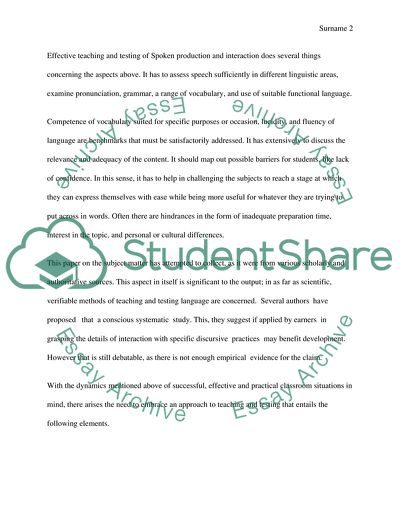Cite this document
(Spoken Interaction and Production Report Example | Topics and Well Written Essays - 3000 words, n.d.)
Spoken Interaction and Production Report Example | Topics and Well Written Essays - 3000 words. https://studentshare.org/humanitarian/1868638-testing-spoken-production-and-testing-spoken-interaction-how-to-teach-how-to-test
Spoken Interaction and Production Report Example | Topics and Well Written Essays - 3000 words. https://studentshare.org/humanitarian/1868638-testing-spoken-production-and-testing-spoken-interaction-how-to-teach-how-to-test
(Spoken Interaction and Production Report Example | Topics and Well Written Essays - 3000 Words)
Spoken Interaction and Production Report Example | Topics and Well Written Essays - 3000 Words. https://studentshare.org/humanitarian/1868638-testing-spoken-production-and-testing-spoken-interaction-how-to-teach-how-to-test.
Spoken Interaction and Production Report Example | Topics and Well Written Essays - 3000 Words. https://studentshare.org/humanitarian/1868638-testing-spoken-production-and-testing-spoken-interaction-how-to-teach-how-to-test.
“Spoken Interaction and Production Report Example | Topics and Well Written Essays - 3000 Words”. https://studentshare.org/humanitarian/1868638-testing-spoken-production-and-testing-spoken-interaction-how-to-teach-how-to-test.


